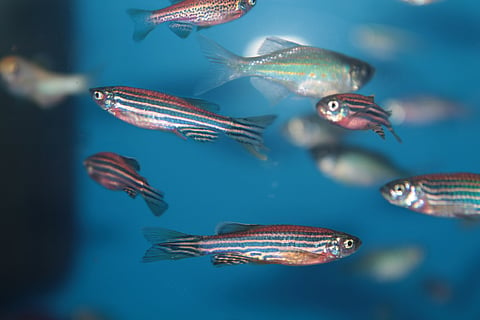MONDAY, Aug. 19, 2024 (HealthDay News) -- A fish might hold clues to healing spinal cord injuries in humans, researchers report.
The damaged nerve cells of zebrafish can survive a spinal cord injury, eventually restoring full movement in the fish.
That’s very unlike humans and most other mammals, in which damaged neurons always die, researchers said.
But the way the zebrafish neurons first survive and then heal run counter to some of the ways in which research efforts are trying to treat spinal cord injuries in humans, the new study says.
Damaged neurons in a zebrafish’s spinal cord dramatically alter their function, with a focus on survival. They then take on new roles in guiding the precise events that guide healing.
“In zebrafish, we think severed neurons can overcome the stress of injury because their flexibility helps them establish new local connections immediately after injury,” said senior researcher Mayssa Mokalled, an associate professor of developmental biology with the Washington University School of Medicine in St. Louis.
“Our research suggests this is a temporary mechanism that buys time, protecting neurons from death and allowing the system to preserve neuronal circuitry while building and regenerating the main spinal cord,” Mokalled added in a university news release.
This is very different from the way human neurons respond to injury. When the spinal cord is crushed or damaged, it sets off a toxic chain of events that kills the neurons and suppresses repair mechanisms, researchers said.
This toxic response could explain why efforts to heal spinal cord injuries using experimental stem cell therapy has failed, researchers said.
Instead of focusing on regenerating neurons using stem cells, any successful method of healing spinal cord injuries in humans must start with saving the injured neurons from death, researchers said.
“We found that most, if not all, aspects of neural repair that we’re trying to achieve in people occur naturally in zebrafish,” Mokalled said.
“The surprising observation we made is that there are strong neuronal protection and repair mechanisms happening right after injury,” Mokalled noted. “We think these protective mechanisms allow neurons to survive the injury and then adopt a kind of spontaneous plasticity -- or flexibility in their functions -- that gives the fish time to regenerate new neurons to achieve full recovery.”
There’s some evidence that such nerve cell healing is possible but dormant in mammals, researchers said. That could provide a new route to therapies that would successfully heal spinal cord injuries.
“Our study has identified genetic targets that will help us promote this type of plasticity in the cells of people and other mammals,” Mokalled said. “We are hopeful that identifying the genes that orchestrate this protective process in zebrafish -- versions of which also are present in the human genome -- will help us find ways to protect neurons in people from the waves of cell death that we see following spinal cord injuries.”
Researchers plan to follow up by focusing on the contributions of other cell types to spinal cord regeneration, and to compare what they found in zebrafish to the cells of mammals.
The new study appears Aug. 15 in the journal Nature Communications.
More information
The National Institutes of Health has more on spinal cord injuries.
SOURCE: Washington University School of Medicine in St. Louis, news release, Aug. 15, 2024


